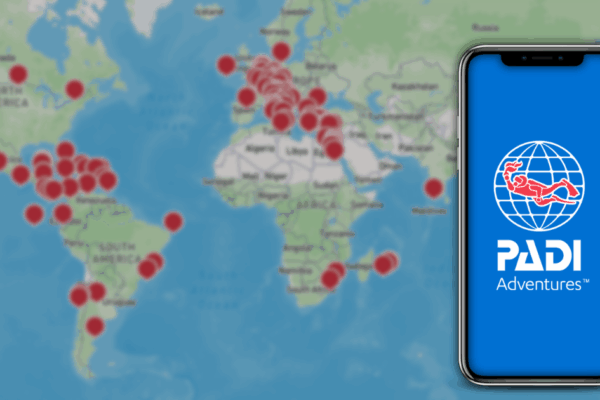Diver safety is your first, most important responsibility and priority because when it’s lacking, people can get hurt or die. That by itself makes diver safety job one, but dive incidents ripple well beyond the victims. They are deep, personal tragedies for all involved, particularly families, friends and fellow divers. These tragedies also affect the global dive community emotionally and with other repercussions. Let’s be clear: diving has risks yet is reasonably safe. However, its risk/severity relationship is why we must always be vigilant in training or supervising divers. In other words, there is generally a reasonably low risk in diving when community, PADI, and safe diving practices are followed, but when they are not followed, or when something goes wrong underwater despite these, the severity of a potential injury has serious consequences.
Most PADI Pros know this and put safety first, but I bring this up because there have been a few incidents where instructors or dive guides didn’t do this, leading to fatalities that were entirely avoidable. These were not simple mind slips or forgetful moments. All of these resulted directly or indirectly from violating course standards and/or ignoring or overriding obvious and accepted dive community safety practices. Out of respect to survivor families I won’t go into specifics, but we’re talking about flagrant, obviously intentional disregard for diver safety and well-being. So here are five points we must never ignore:
1. Course safety standards and community safe diving practices are central to diver safety. Incident data repeatedly show that when someone deviates from these, the potential for an incident goes up. Analyses find violations cause or contribute to the majority of diver fatalities. The lesson is obvious: Follow all course standards and diving safe practices always, all the time, to the best of your ability. They work – and the data show it.
2. Safety overlap is not superfluous. Safety procedures overlap and repeat, and this is intentional and necessary. No single safety procedure accounts for all variables – and those variables include inevitable human error – so we apply multiple procedure “layers” to close the gaps and help offset unintended simple mistakes or omissions. Incidents show that skipping seemingly repetitive procedures or disregarding seemingly “minor” standards removes a safety layer that in retrospect, would have prevented a tragedy.
3. Safety is human. Safety standards and practices work very well when adapted to the local conditions and to the diver ability, but they don’t work by themselves – nor are they intended to. They rely on conservative good judgment and reasoned application. As you already know, ratios, depths, etc. set maximums, but we reduce these as need to suit conditions, individual diver characteristics and so on. Divers and dive professionals do this very well the vast majority of the time, or the dive accident rate would likely be substantially higher. If we’re self-honest, doing this is primarily a matter of common sense and choosing the more conservative option when in doubt. Yet, there have been lives lost, even in training, due to diving without required equipment or skipping procedures that even PADI Open Water Diver students would know are mandatory. Very poor inexcusable judgment.
4. Safety procedures are dynamic. People, conditions and circumstances vary. Technology, diving physiology knowledge and community practices change, so PADI Standards and Procedures change with them – that’s why the Training Bulletin/Training News is mandatory reading. And if you find yourself in one of those perplexing situations where following standards and procedures seems difficult or even impossible, chances are it’s not. In general, there’s no reason or excuse for violating PADI Standards and Procedures. You can always contact a PADI Regional Training Consultant or Quality Management staff member to discuss and assist you.
5. You must always be “on duty” when it comes to safety. Diving has an impressive safety record but striving to improve it never stops. Your actions must be visible and unmistakable, reflecting what we teach and best practice without exception. A good example of this is predive safety checks, which sometimes get overlooked or glossed over outside of training; yet incident data and anecdotal reports suggest that tight checks would prevent many incidents and close calls. By conspicuously doing predive checks ourselves, we can encourage other divers to do the same. Download and display the Predive Safety Check poster in prominent places – on boats, in dive centers, classrooms, pool areas, etc. Now available in 14 languages and based on findings from dive incident data as well as surgical setting checklists, the Predive Safety Check poster is an easy way to promote safer diving as both reminder and a teaching tool.
A final point: When a dive instructor neglects standards, disregards required equipment or flouts established practices, they not only increase the likelihood of an unnecessary tragedy, but they can also be difficult or impossible to defend reasonably. Plus, it can void professional insurance warranties, leaving provided coverage for defense and liability in question at best. However, when you follow standards and procedures diligently to the best of your ability, you greatly reduce risk. And should there be an incident, your actions can be compared to these standards to defend that they were proper, reasonable and appropriately applied to the local diving conditions for the divers under your supervision.
Drew Richardson
President & CEO
PS. You can download the Predive Safety Check poster from: Pros Site > Resources > Course Related Documents. Choose a language and look in Other Resources of Open Water Diver (it is in Other Resources for many other courses, too).




